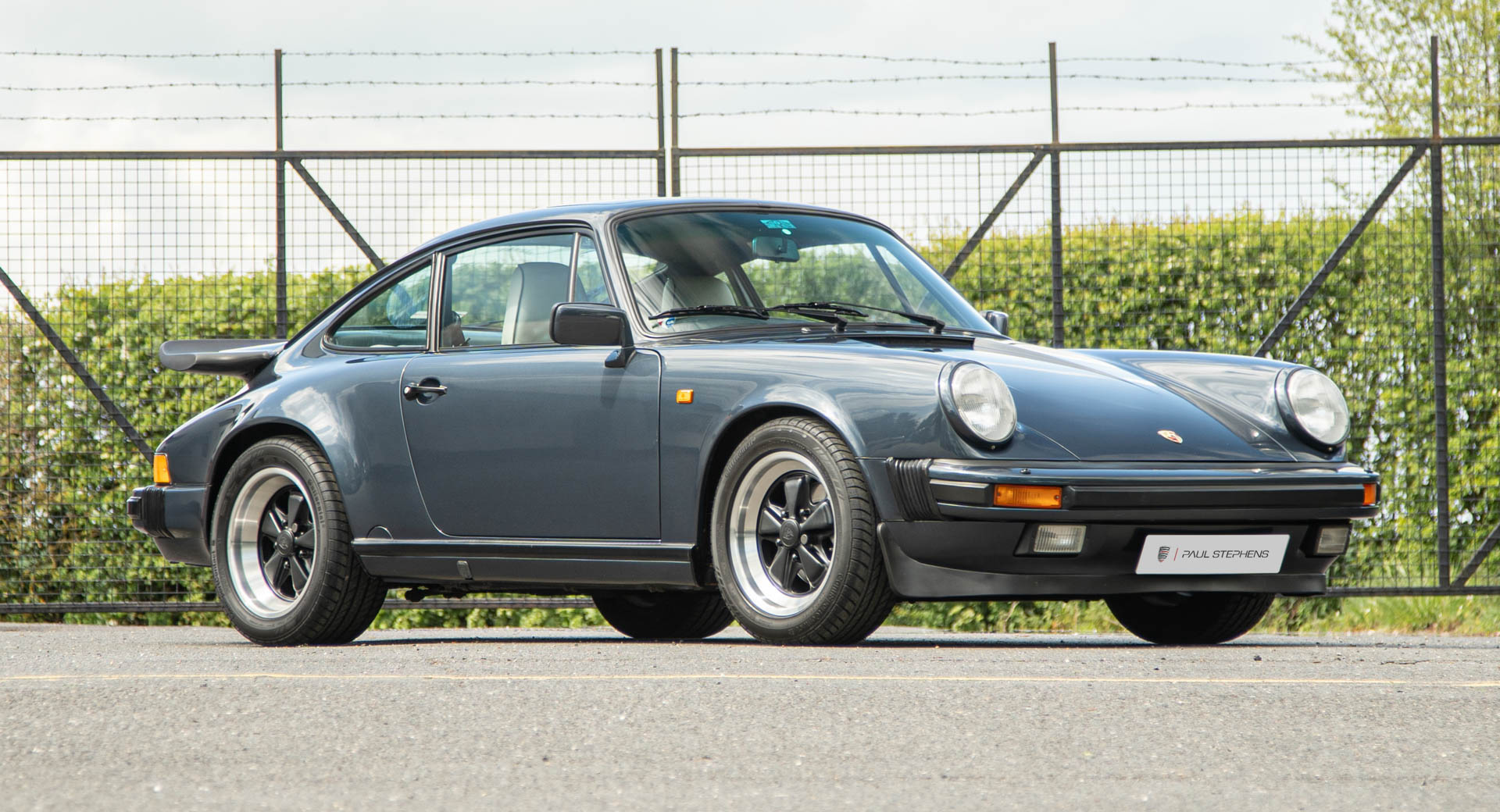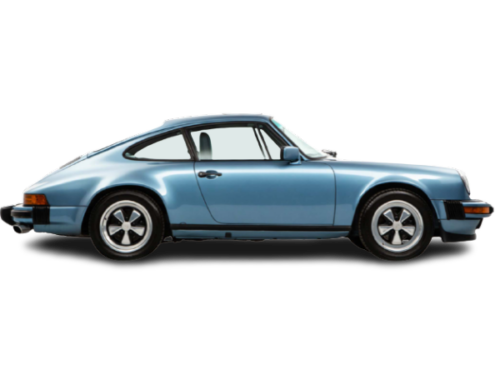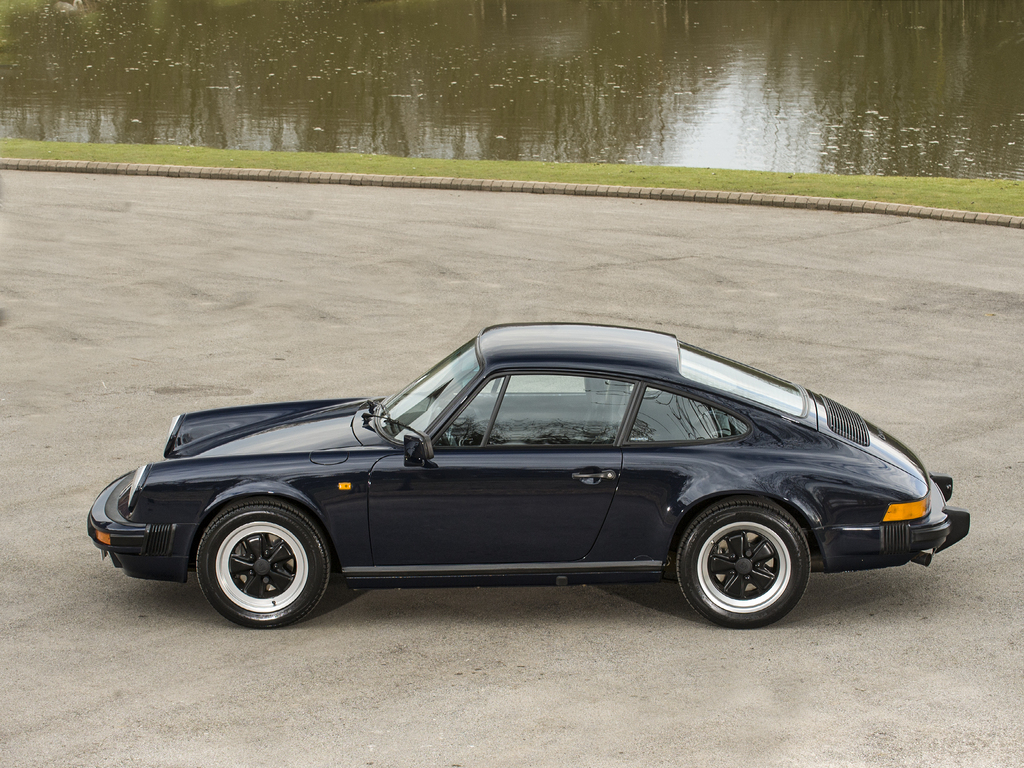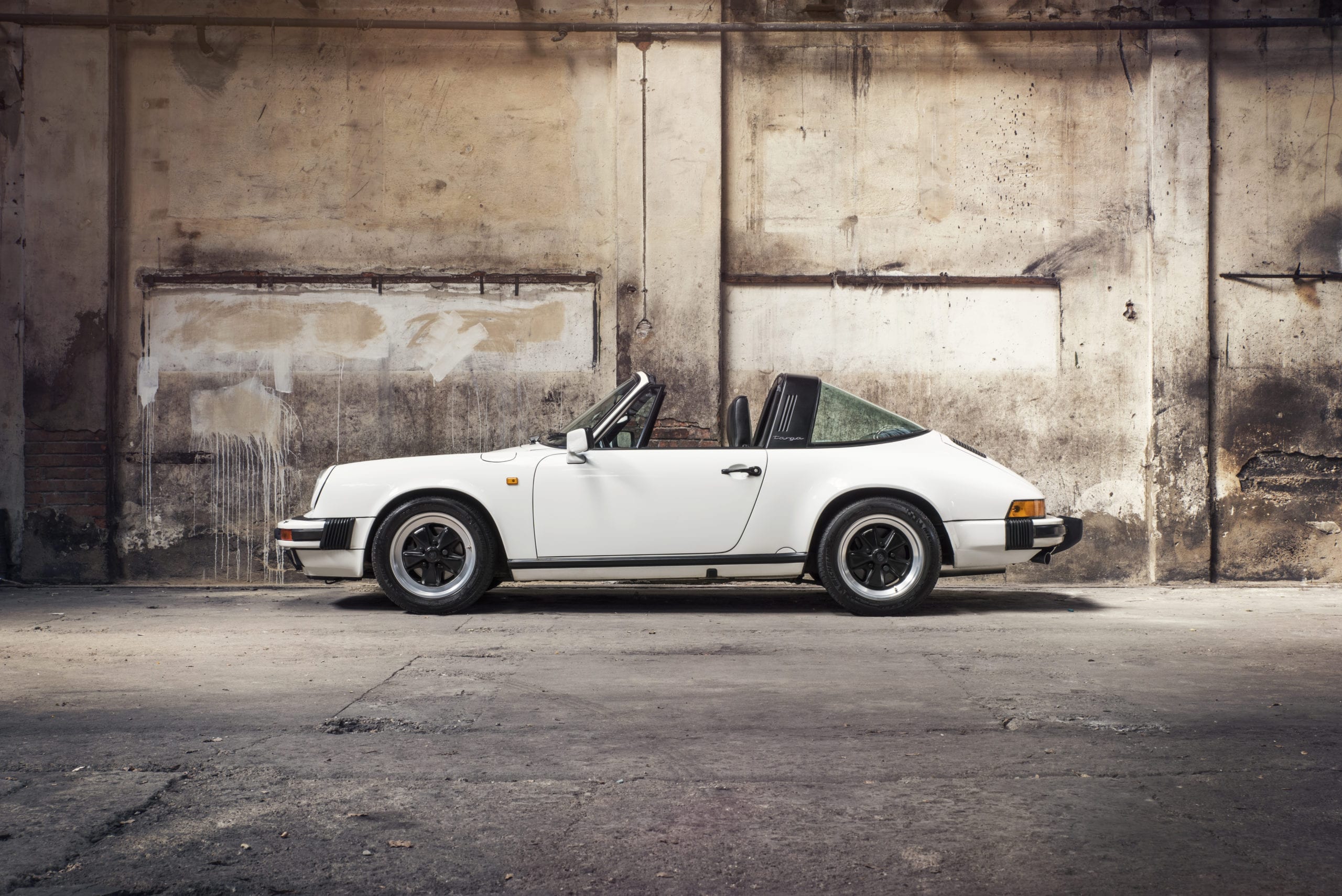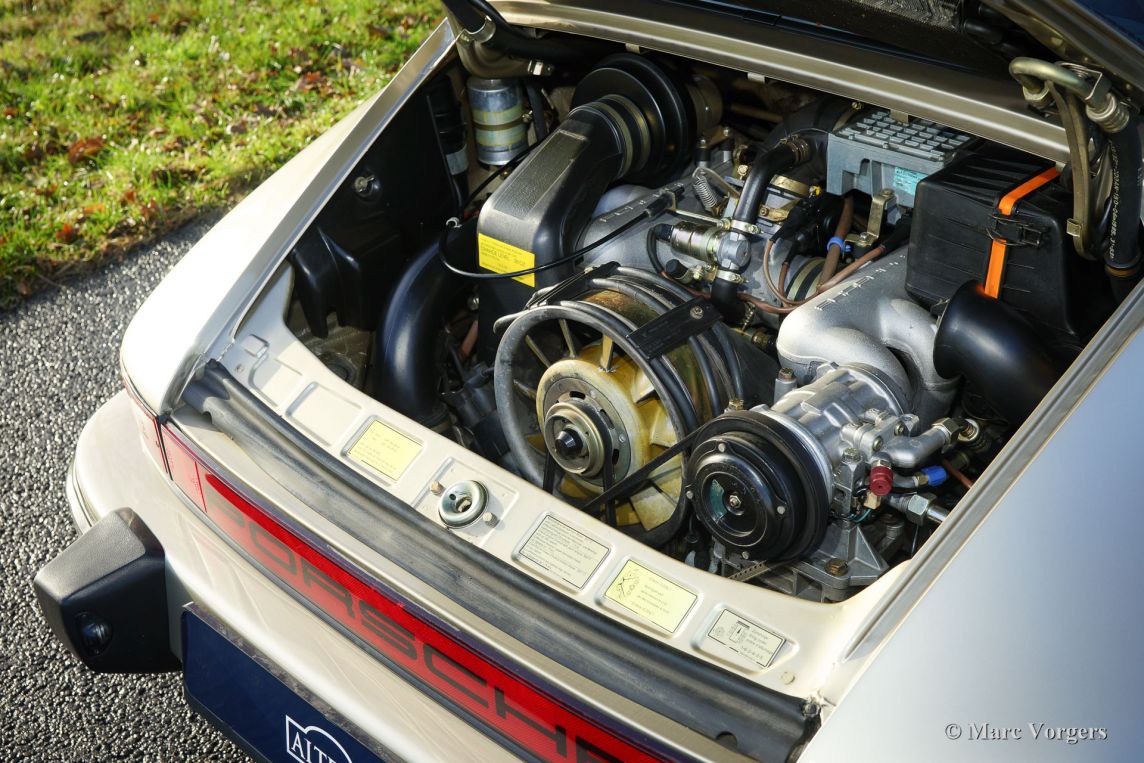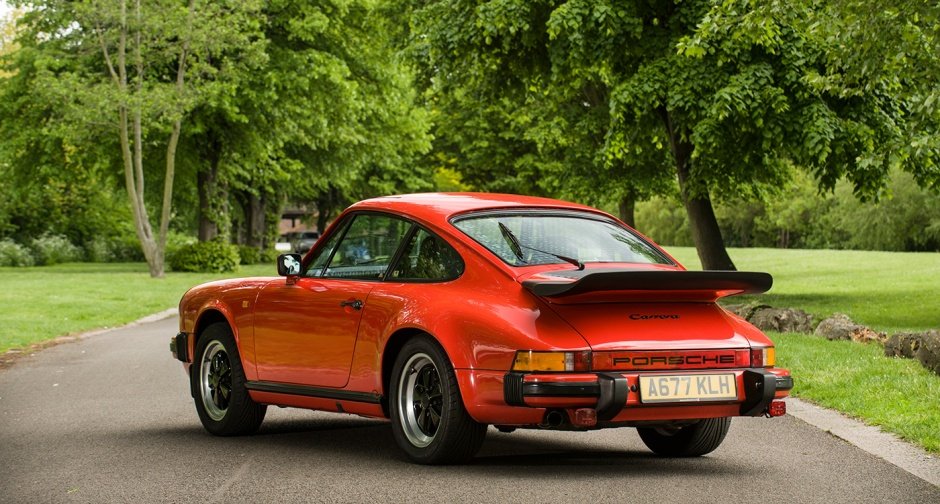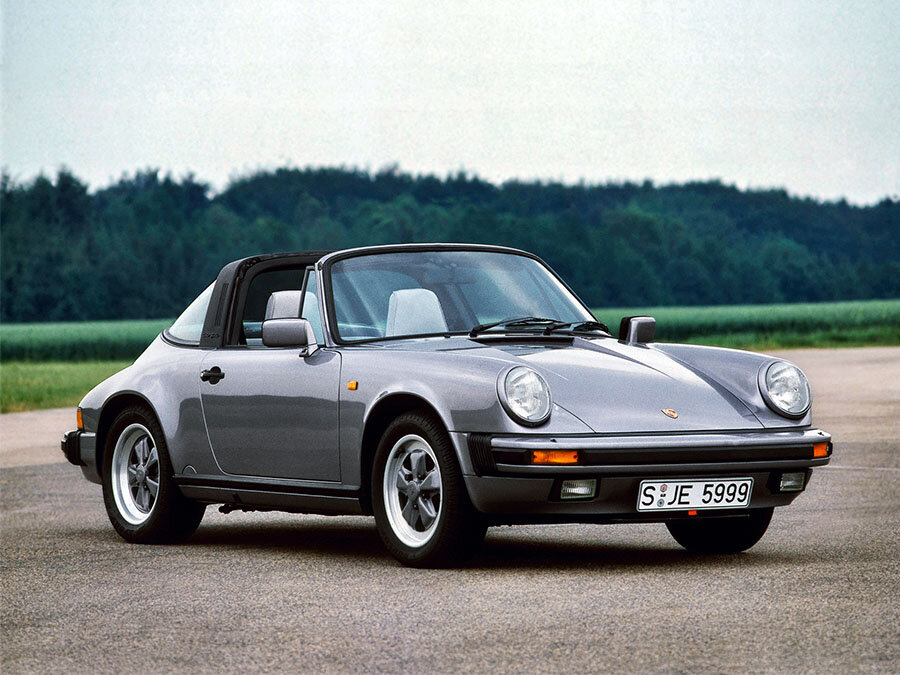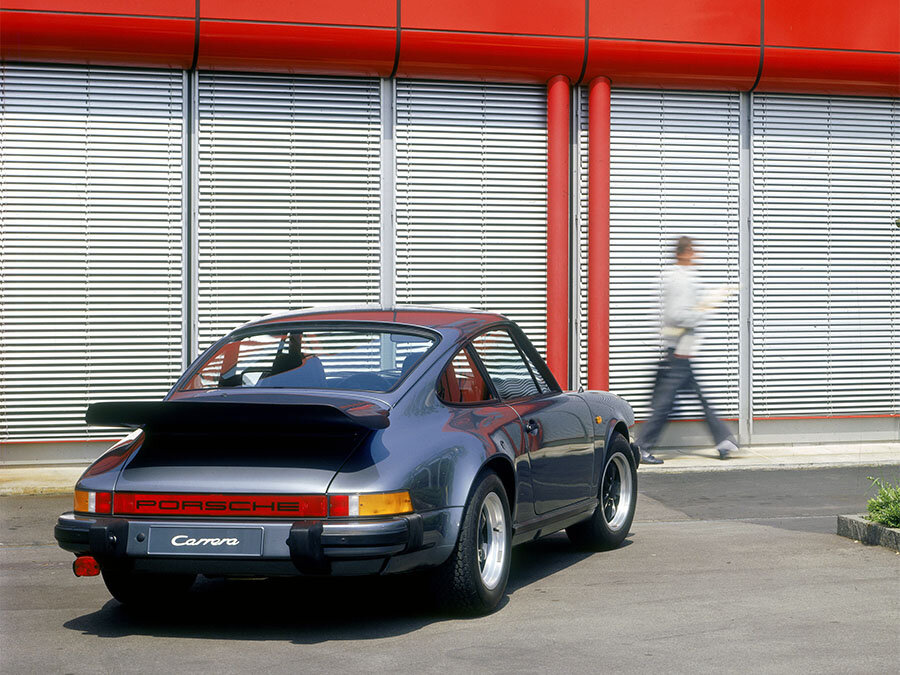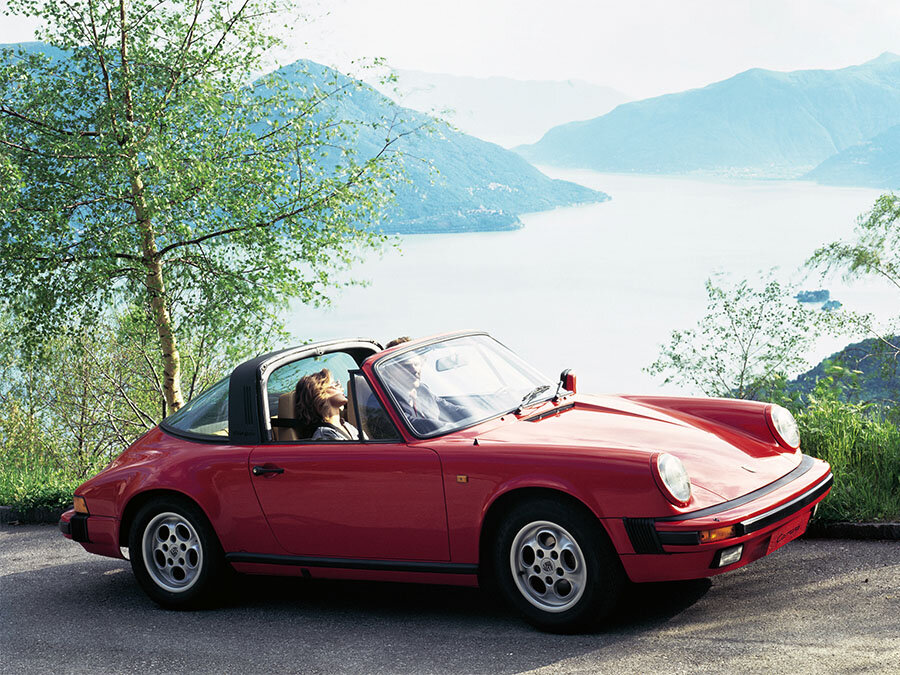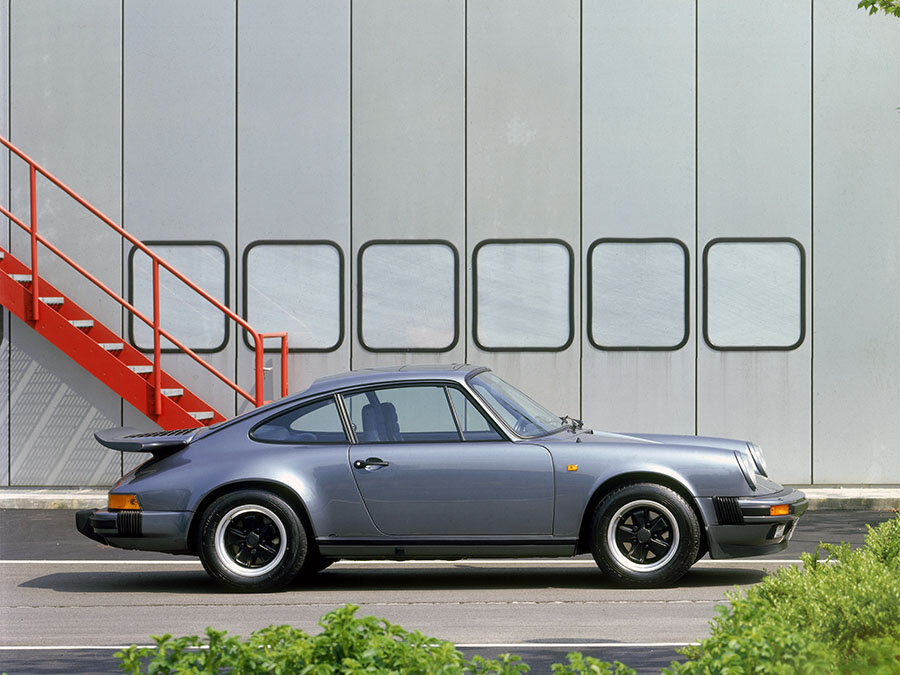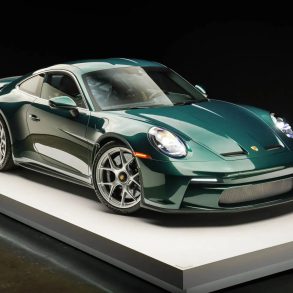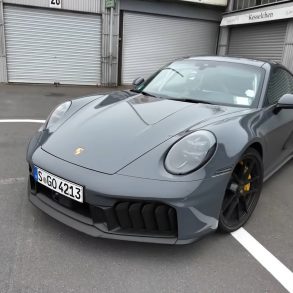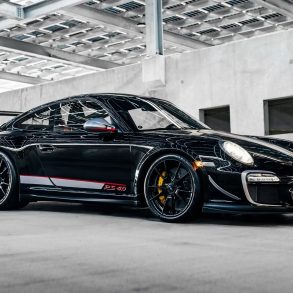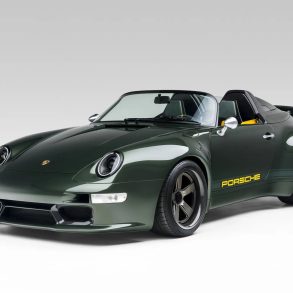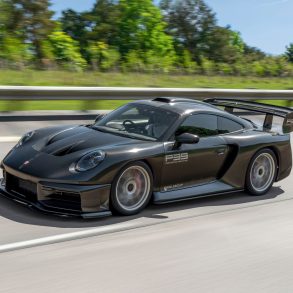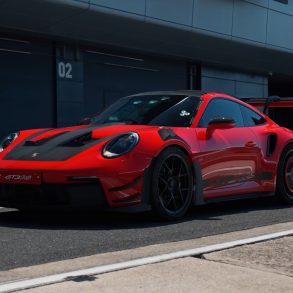(1984 – 1989) Porsche 911 Carrera 3.2 – Ultimate Guide
The Porsche 911 Carrera 3.2 was produced for model years 1984 to 1989. If you are looking to get into classic Porsche 911s, the 3.2-liter Carrera lineup is a good place for a beginner to start. Over 70,000 units were produced, and they are still plentiful, affordable, and blend the tradition of the early cars with dabs of modernity and comfort. 3.2 Carreras were offered in all three 911 body styles: coupe, convertible Cabriolet, and the Targa, with its removable center roof panel.
The SC had been launched with a three-litre 180bhp engine that was quickly uprated to 188 bhp once Porsche realized the 911 would be sticking around for the long haul. A 204 bhp version followed in August 1980. For the 1984 model year E-series 911 (production of which started in September 1983) Porsche introduced a further uprated model: the 911 Carrera.
Reviving the Carrera name for the first time since 1977, it featured a new higher-displacement power plant, the 3.2-litre horizontally opposed flat 6-cylinder engine. With new 231 bhp, the Carrera addressed the calls for more performance and became the most commercially successful 911 yet.
Compared to the 911 SC, the Carrera 3.2 featured front fog lights that were integrated into the front bumper. The Carrera’s basic architecture was the same as the original 911, but steady evolution kept the performance ahead of most of the pack so these are decent cars overall. The 911 Carrera 3.2 could be ordered in Coupe, Targa or Cabriolet body styles. It was produced alongside the 924, 944, 928 and Turbo 930.
The Background
In the mid- to late 1970s, the 911’s future was very uncertain. Porsche was preparing to drop the 911 from the lineup, replacing it with the front-engined, V8-powered 928. The SC was introduced in September 1977 and it was expected it to be the final iteration of the 911. In the 911’s place, Porsche would offer the 928, a front-engined GT powered by a conventional water-cooled V8. Launched at the Geneva Motor Show in March 1977, the 928 was hailed as the best GT of its era. It even won the European Car of the Year award in 1978. However, the expensive new model failed to capture the public’s imagination and, for every 928 sold, Porsche shifted 20 times as many 911s. Along came new CEO Peter Schutz who (thank goodness) double down on the 911. The well-received 911 SC ran from 1978-1983.
Porsche was facing new legal and emissions issues with their cars. In their main sales markets USA, Japan and Europe, tighter emission rules from 1983 onwards meant, that the engineers in Zuffenhause had to redesign their engines. As a result, Porsche developed the last hurrah of the 911 G-series: the 911 Carrera 3.2.
The six-cylinder boxer engine now had a capacity of 3,164 cm³ due to a bore increased by 4 mm, the crankshaft of the 3.3 Turbo and a compression ratio of 10.3:1 in the 930/20 engine, in the US, Canada and Japan, the Carrera was offered with the lower compression 930/21 engine, offering 9.5 : 1. As a result, the 930/20 engine pushed out 231 hp at 5,900 rpm while delivering 284 Nm of torque at 4,800 rpm, the 930/21 had to deal with 207 hp and 265 Nm. According to Porsche themselves, 80 per cent of the engine had been completely redeveloped.
Being Porsche, the goal wasn’t just making the 911 more polar bear-friendly. Of course, the engine had to become more powerful as well. Therefore the mechanically controlled K-Jetronic was replaced by the new L-Jetronic with the electronic Bosch Motronic (DME), which was the first system that could handle the injection and ignition via a single device. Combined with the then-new shut off on the overrun, the 911 Carrerea 3.2 was much improved on both, emissions and gas mileage. Moreover, the 911 Carrerea 3.2 got hydraulic timing chain tensioners and an improved oil cooler.
The Details
With the 911s future secure, the biggest news for the 1984 Carrera was an updated flat six, which was similar to the one in the SC yet still 80% new, according to Porsche. Displacement increased from 3.0 to 3.2 liters by using the 3.3-liter 911 Turbo’s crankshaft for a longer stroke, and the CIS fuel injection system was replaced with a Bosch electronic control unit similar to what was found in the Porsche 944.
Digital engine electronics (DEE) celebrated its debut. Its most important advantages were better fuel consumption, cleaner combustion and therefore maximum power output. The system worked with a shared control unit which all the engine’s operating states were programmed into. The correct injection quantity and the exact ignition point were assigned to each engine speed, each accelerator position and temperature. The overrun fuel cutoff, i.e. no fuel was consumed when the engine was overrunning, and electronic idle speed control when auxiliary components were activated were useful additions provided by the digital engine electronics. The knock control system ensured “healthy” engine operating conditions. DEE is combined with various injection systems, depending on the engine.
With the new engine, power was increased to 207 hp @ 5,900 rpm for North American-delivered cars and to 231 bhp @ 5900 rpm for most other markets. Torque was a healthy 209 ft lbs @ 4800rpm. Weighing in at roughly 2,800 pounds, performance was strong, with Porsche claiming a 0 – 60 mph time of 6.1 seconds and a top speed of 152 mph. External testing showed these numbers were conservative, with magazines like Autocar able to do 0–60 mph in 5.4 seconds. The US cars were slightly slower due to the lower horsepower.
The Carrera put the power to the ground with 185/70 front and 215/60 rear tires, respectively, which were mounted to 15 x 6-inch front and 15 x 7-inch rear wheels.
Other key improvements included more reliable oil-pressure-fed timing chain tensioners, thicker brake discs, larger rear-caliper pistons, bigger brake booster, and a brake pressure-limiting valve that reduced the front wheels’ tendency to lock up before the rears. The heating system was also marginally improved.
Porsche’s Type 915 five-speed manual transmission — used since 1972 and known for its notchy throws and lack of a gear selector centering spring — continued on in the Carrera. The 911 Carrera coupe could be had as a “Turbo Look,” which gave it the wider fenders of the 911 Turbo, the whale-tail spoil, plus all of its running gear short of the engine.
Externally, the Carrera is almost indistinguishable from the SC with the only clue being the front fog lights that were integrated into the front valance. Only cosmetic changes were made during the production of the Carrera, with a redesigned dashboard featuring larger air conditioning vents appearing in 1986. The Carrera was available in Coupe, Targa and Cabriolet bodystyles from 1984 – 1989. A new Speedster bodystyle was introduced in 1989 as a limited edition car.
The interior got some upgrades too, most notably the centre console and heater controls were from the 930 model. The dash, seats and door panels were all the same as on the SC. Standard equipment included high-backed half leather seats and electric windows.
Speaking of looks, Porsche introduced a new wide-body package option during the Carrera’s life. At first through the specials department and eventually as a standard option in 1986. Known as the M491 option it was commonly known as the “Turbo-Look”. It gave the naturally aspirated cars the look and style of the 930 Turbo with wide wheel arches and the distinctive “tea tray” tail. It wasn’t just about looks however, because M491 also got you the stiffer suspension shared with the Turbo and the superior Turbo braking system as well as the wider Turbo wheels. At first, only available for the Coupé, but from model year 1986 the Turbo-Look option could be ordered on all three models; Coupé, Cabriolet and Targa.
Production Numbers
The 911 3.2 Carrera was replaced by the updated next generation 911, the Type 964. From 1984 until 1989 more 76,000 911 Carrera 3.2s were built in Zuffenhausen. Roughly half of them were Coupés, with the other half being covered by Targas and Cabriolets in nearly equal share. Thanks to the high production numbers, the 911 Carrera 3.2 is still affordable in the used market and a solid car for those looking to get into their first 911.
| Model Year | Series | Coupe | Targa | Cabriolet | Speedster | Total |
| 1984 | E-series | 6532 | 3793 | 3103 | 13428 | |
| 1985 | F-series | 5710 | 3441 | 2708 | 11859 | |
| 1986 | G-series | 6883 | 3813 | 4424 | 15120 | |
| 1987 | H-series | 6605 | 3665 | 4202 | 14472 | |
| 1988 | I-series | 6076 | 2867 | 3698 | 12641 | |
| 1989 | J-series | 4688 | 1923 | 4148 | 2104 | 12863 |
Model Timeline
1984 Model Year – E Series Cars
Production for the 1984 model year E-series 911 Carrera totaled 13,428 units split as follows: Coupe 6532, Targa 3793 and Cabriolet 3103.
1985 Model Year – F Series Cars
The 1985 model year got some great improvements. The radio antenna was now incorporated into the windscreen, heated windscreen washers were fitted, and Porsche switched to Boge dampers. At the front, the spoiler was changed to accomm a well hidden oil cooling duct. Inside, the seats were new and no had electric controls.
1986 Model Year – G Series Cars
The 911 Carrera received a few more changes for the 1986 model year. The anti-roll bars were stiffened, with their diameters increasing from 20 to 22 millimeters up front and 24 to 25 mm at the rear. In fact, the shock absorbers, anti-roll bars and rear torsion bars were all new. The seat was lowered to give more head room, and the cabriolet’s convertible top gained an electric motor latches for operation at the press of a button.
1986 was also the first year for the new M491 Turbo Equipment package. These became known as the Turbo-Look cars and created the Turbo’s look for non-turbo cars. The package included bodywork, spoilers, suspension, brakes and wheels from the turbocharged 930 but with the normally aspirated 3.2-litre running gear.
1987 Model Year – H Series Cars
The 1987 911 Carrera brought a couple significant changes to the engine and gearbox. The engine was retuned to run on premium-unleaded fuel, which increased horsepower to 217 and torque to 195 lb-ft. The old Porsche 915 gearbox was finally replaced by the Getrag G50, which used a hydraulically actuated clutch instead of the previous cable system, and it had a gear selector centering spring for neutral. Shift throws were much improved with a more defined gate. Front tire size was increased to 195/65.
Most fun for buyers in the USA, Canada and Japan was the fact they got a more powerful engine (Type 930/25) which was good for 217 bhp and 195 ft lbs.
A very special new Carrera 3.2 Clubsport model was introduced.
1988 Model Year – I Series Cars
The 1988 model year cars got larger anti-roll bars and new Fuchs wheels as standard. A bunch of other things were made standard and new options included a new stereo system with 8 speakers and crushed leather (how 1980s). In August 1988, a limited edition 25th anniversary 911 was launched, with only 875 built.
1989 Model Year – J Series Cars
The 1989 model year was the final product year for the 3.2. The Fuchs wheels were bigger (both in diameter and width) and once again the 911 got thicker anti-roll bars. A CD player was added to the options list. New for 1989 was also the new 3.2 Speedster model variant.


